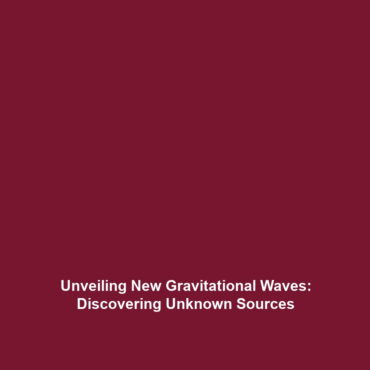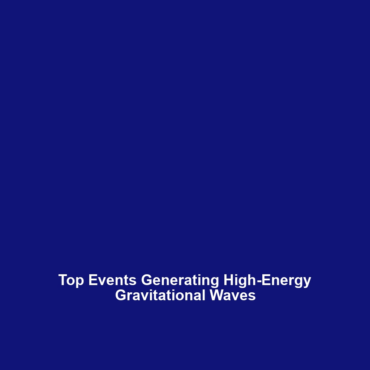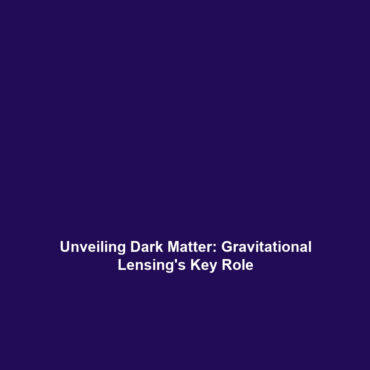The Potential to Uncover New, Unknown Sources of Gravitational Waves
Introduction
The recent advancements in gravitational wave astronomy have opened exciting avenues for researchers, allowing the exploration of new, unknown sources of gravitational waves. Gravitational waves, which are ripples in spacetime caused by massive cosmic events, hold the key to unlocking many mysteries of the universe. Discovering these unknown sources can significantly enhance our understanding of astrophysical processes and offer insights into the properties of black holes, neutron stars, and other celestial phenomena.
Key Concepts
Understanding the potential to uncover new sources of gravitational waves involves several key concepts:
What are Gravitational Waves?
Gravitational waves are disturbances in spacetime resulting from accelerated masses, such as colliding black holes or neutron stars. Their detection enables scientists to observe cosmic events that were previously invisible.
Known and Unknown Sources
Current gravitational wave observatories like LIGO and Virgo have primarily detected events such as mergers of binary black holes. However, the potential exists to find new sources, including:
- Exotic compact objects
- Supernova explosions
- Cosmic strings
Applications and Real-World Uses
The ability to uncover new sources of gravitational waves has practical applications in various fields:
- Astrophysics: Understanding the life cycles of stars and the formation of galaxies.
- Cosmology: Gaining insights into the early universe and dark matter.
- Technology: Advancements in detection technologies have broader applications in fields such as engineering and medicine.
Current Challenges
Exploring the potential of new gravitational wave sources comes with several challenges, including:
- Limited sensitivity of current detectors
- Noise interference from terrestrial sources
- Complexity in pinpointing the origin of gravitational waves
- Difficulties in theorizing unknown sources based on current models
Future Research and Innovations
Looking ahead, several innovations and research initiatives are expected to enhance our capability to detect gravitational waves:
- Next-generation detectors such as the Einstein Telescope
- Improved data analysis techniques using machine learning
- International collaborations to expand observational networks
Conclusion
The potential to uncover new, unknown sources of gravitational waves represents a significant frontier in the study of the universe. As we advance our detection capabilities and refine our theoretical frameworks, the opportunity to gain unprecedented insights into the cosmos grows ever closer. For further reading on gravitational waves and their myriad implications, explore our articles on [Astrophysics](#) and [Black Hole Research](#).




